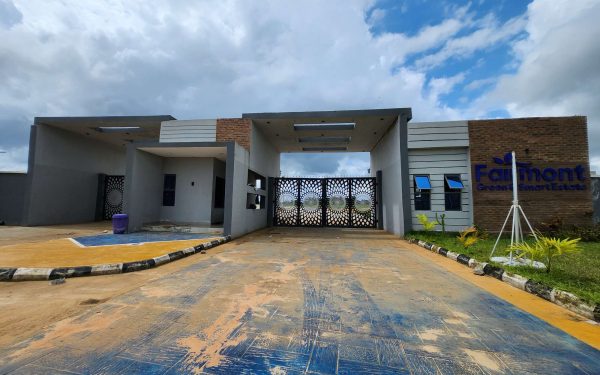The Anatomy of a Car Crash: A Glimpse into the Aftermath and the Importance of Road Safety

Car crashes, though grim and often devastating, serve as stark reminders of the fragility of life and the unpredictable nature of the roads we traverse. Each photograph capturing the aftermath of a car crash tells a unique story, encapsulating a moment that can change lives forever. In this article, we delve into the intricacies of a car crash picture, exploring the impact it leaves on individuals, the significance of road safety, and the broader societal implications.
Table of Contents
ToggleThe Emotional Impact:
A single photograph of a car crash can evoke a myriad of emotions, from shock and sadness to fear and empathy. The twisted metal, shattered glass, and deployed airbags tell a tale of a violent collision that disrupted the routine of those involved. The emotional impact extends beyond the immediate individuals involved, reaching friends, families, and even communities. These images serve as powerful reminders of the human cost associated with traffic accidents and prompt us to reflect on the consequences of our actions behind the wheel.
The Human Stories:
Behind every car crash photograph lies a human story. There are individuals with families, dreams, and aspirations abruptly interrupted by the unforgiving forces of a collision. The aftermath depicted in the photograph captures the chaos, the pain, and the immediate aftermath of the crash. It tells the story of first responders rushing to the scene, bystanders offering help, and the victims grappling with the shock of what just transpired. These images, though haunting, serve as a testament to the resilience of the human spirit and the importance of solidarity in times of crisis.
The Importance of Road Safety:
Car crash photographs also play a crucial role in emphasizing the importance of road safety. They serve as cautionary tales, urging us to reevaluate our driving habits, adhere to traffic rules, and embrace responsible behaviors on the road. Analyzing these pictures allows us to identify patterns and common causes of accidents, facilitating a better understanding of how to prevent future tragedies. From distracted driving to speeding, the images serve as a visual guide to the potential consequences of irresponsible actions behind the wheel.
Preventing Future Tragedies:
While car crash photographs highlight the immediate aftermath, they also provide an opportunity for society to come together and implement measures to prevent future tragedies. Governments, law enforcement agencies, and advocacy groups use these visuals to raise awareness about the importance of safe driving practices. From public service announcements to educational campaigns, the images become a catalyst for change, pushing for stricter regulations, enhanced infrastructure, and better enforcement of traffic laws.
The Role of Technology:
Advancements in technology have also played a pivotal role in understanding and mitigating the impact of car crashes. In many cases, photographs taken at the scene contribute crucial information for accident reconstruction. This aids investigators in determining the sequence of events leading to the crash, identifying contributing factors, and assigning responsibility. Additionally, technological innovations such as automatic emergency braking systems and lane departure warnings aim to reduce the likelihood of accidents, further emphasizing the role of technology in enhancing road safety.
Changing Perceptions:
Car crash photographs have the power to challenge and reshape societal perceptions surrounding road safety. They compel us to confront the harsh realities of traffic accidents and dispel the notion that such incidents only happen to others. By humanizing the victims and illustrating the far-reaching consequences, these images foster a collective responsibility to prioritize safety on the roads. Changing the narrative around car crashes is essential in creating a culture that values and prioritizes responsible driving.
Conclusion:
A photograph capturing the aftermath of a car crash is not merely an image frozen in time; it is a portal into the complex web of emotions, stories, and consequences that follow such tragic events. These visuals serve as reminders of the fragility of life, the importance of responsible driving, and the need for continuous efforts to improve road safety. By understanding the human stories behind each photograph and embracing the lessons they offer, we can work towards a future where such devastating scenes become increasingly rare.
Q1: Why are car crash photos often shared or displayed? A1: Car crash photos are shared or displayed for various reasons, including raising awareness about the consequences of irresponsible driving, advocating for road safety, and encouraging preventive measures. These visuals serve as impactful reminders of the potential dangers on the road and aim to prompt individuals and communities to prioritize safe driving practices.
Q2: How do car crash photos contribute to road safety? A2: Car crash photos contribute to road safety by serving as powerful educational tools. Analyzing these images allows for a better understanding of the causes and consequences of accidents, helping to identify patterns and common risk factors. Governments, law enforcement agencies, and advocacy groups use these visuals to implement and promote measures aimed at preventing future tragedies.
Q3: Are car crash photos used in accident investigations? A3: Yes, car crash photos play a crucial role in accident investigations. These photos provide valuable information for reconstructing the sequence of events leading to the crash, identifying contributing factors, and determining responsibility. Investigators use them to gather evidence, analyze impact points, and piece together the dynamics of the collision.
Q4: Do car crash photos have an emotional impact on viewers? A4: Yes, car crash photos can have a significant emotional impact on viewers. The images capture the aftermath of a traumatic event, portraying the human toll and the immediate chaos at the scene. They evoke emotions such as shock, sadness, and empathy, making them powerful tools for conveying the gravity of road accidents and encouraging empathy towards the victims.
Q5: How can car crash photos change public perceptions? A5: Car crash photos have the potential to change public perceptions by humanizing the victims and illustrating the real-life consequences of road accidents. By dispelling the notion that such incidents only happen to others, these images encourage a collective responsibility to prioritize safety on the roads. They challenge societal attitudes and contribute to fostering a culture that values responsible driving.
Q6: What role does technology play in understanding car crashes through photos? A6: Technology plays a significant role in understanding car crashes through photos. Advanced tools and software aid investigators in accident reconstruction by analyzing images to determine the sequence of events, impact points, and contributing factors. Additionally, technology contributes to the development of safety features in vehicles, helping to prevent accidents and mitigate their impact.
Q7: Are car crash photos used for advocacy and awareness campaigns? A7: Yes, car crash photos are often used in advocacy and awareness campaigns. Governments, NGOs, and other organizations leverage these visuals to highlight the importance of road safety, discourage reckless driving behaviors, and promote responsible road use. The impact of these images serves as a catalyst for change, prompting communities to prioritize and invest in road safety initiatives.
Q8: How can individuals cope with the emotional impact of viewing car crash photos? A8: Viewing car crash photos can be emotionally challenging. It’s essential for individuals to be mindful of their emotional well-being. If the images evoke distress, it may be helpful to limit exposure, seek support from friends or professionals, and engage in activities that promote emotional resilience. Understanding the purpose behind these images—advocacy and education—can also provide context for viewers.
Q9: Can car crash photos be effective in preventing accidents? A9: Car crash photos can be effective in preventing accidents by serving as powerful deterrents. When individuals see the real-life consequences of irresponsible driving, it can influence their behavior on the road. Education campaigns using these images aim to create a lasting impact, encouraging drivers to adopt safer practices and contribute to overall road safety.
Q10: How can society use car crash photos to promote positive change? A10: Society can use car crash photos to promote positive change by incorporating them into comprehensive road safety campaigns. These campaigns should focus on educating the public, advocating for stricter regulations, improving infrastructure, and fostering a culture of responsible driving. By harnessing the emotional impact of these images, society can work towards reducing the frequency and severity of car accidents.





